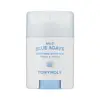What's inside
What's inside
 Key Ingredients
Key Ingredients

 Benefits
Benefits

 Concerns
Concerns

 Ingredients Side-by-side
Ingredients Side-by-side

Water
Skin ConditioningDibutyl Adipate
EmollientSynthetic Wax
AbrasiveSilica
AbrasiveDiethylamino Hydroxybenzoyl Hexyl Benzoate
UV FilterButyloctyl Salicylate
Skin ConditioningDimethicone
EmollientEthylhexyl Triazone
UV AbsorberPolysilicone-15
UV FilterBis-Ethylhexyloxyphenol Methoxyphenyl Triazine
Skin ConditioningButylene Glycol
HumectantNiacinamide
SmoothingVinyl Dimethicone/Methicone Silsesquioxane Crosspolymer
Stearyl Heptanoate
EmollientLauryl Polyglyceryl-3 Polydimethylsiloxyethyl Dimethicone
Skin ConditioningTriethoxycaprylylsilane
Agave Tequilana Leaf Extract
Astringent1,2-Hexanediol
Skin ConditioningCaprylic/Capric Glycerides
EmollientPolyglyceryl-4 Diisostearate/Polyhydroxystearate/Sebacate
EmulsifyingPolyglyceryl-4 Isostearate
EmulsifyingMethyl Diisopropyl Propionamide
MaskingParfum
MaskingAdenosine
Skin ConditioningDisodium EDTA
Glycerin
HumectantLaminaria Japonica Extract
Skin ProtectingUlmus Davidiana Root Extract
Skin ConditioningLavandula Angustifolia Extract
Skin ConditioningPinus Densiflora Leaf Extract
AntimicrobialAloe Barbadensis Leaf Extract
EmollientMentha Suaveolens Leaf Extract
AstringentViola Mandshurica Flower Extract
AntioxidantDioscorea Japonica Root Extract
Skin ConditioningMentha Arvensis Leaf Extract
MaskingThymus Vulgaris Leaf Extract
Skin ProtectingWater, Dibutyl Adipate, Synthetic Wax, Silica, Diethylamino Hydroxybenzoyl Hexyl Benzoate, Butyloctyl Salicylate, Dimethicone, Ethylhexyl Triazone, Polysilicone-15, Bis-Ethylhexyloxyphenol Methoxyphenyl Triazine, Butylene Glycol, Niacinamide, Vinyl Dimethicone/Methicone Silsesquioxane Crosspolymer, Stearyl Heptanoate, Lauryl Polyglyceryl-3 Polydimethylsiloxyethyl Dimethicone, Triethoxycaprylylsilane, Agave Tequilana Leaf Extract, 1,2-Hexanediol, Caprylic/Capric Glycerides, Polyglyceryl-4 Diisostearate/Polyhydroxystearate/Sebacate, Polyglyceryl-4 Isostearate, Methyl Diisopropyl Propionamide, Parfum, Adenosine, Disodium EDTA, Glycerin, Laminaria Japonica Extract, Ulmus Davidiana Root Extract, Lavandula Angustifolia Extract, Pinus Densiflora Leaf Extract, Aloe Barbadensis Leaf Extract, Mentha Suaveolens Leaf Extract, Viola Mandshurica Flower Extract, Dioscorea Japonica Root Extract, Mentha Arvensis Leaf Extract, Thymus Vulgaris Leaf Extract
Butyl Methoxydibenzoylmethane 3%
UV AbsorberHomosalate 15%
Skin ConditioningEthylhexyl Salicylate 5%
UV AbsorberOctocrylene 10%
UV AbsorberNeopentyl Glycol Diethylhexanoate
EmollientOctyldodecyl Neopentanoate
EmollientPolyethylene
AbrasiveIsohexadecane
EmollientButyloctyl Salicylate
Skin ConditioningOzokerite
Emulsion StabilisingParaffin
PerfumingSynthetic Beeswax
Emulsion StabilisingC12-15 Alkyl Benzoate
AntimicrobialVp/Eicosene Copolymer
Neopentyl Glycol Diisostearate
EmulsifyingDimethicone
EmollientDiethylhexyl 2,6-Naphthalate
EmollientStyrene/Acrylates Copolymer
Parfum
MaskingBHT
AntioxidantButyl Methoxydibenzoylmethane 3%, Homosalate 15%, Ethylhexyl Salicylate 5%, Octocrylene 10%, Neopentyl Glycol Diethylhexanoate, Octyldodecyl Neopentanoate, Polyethylene, Isohexadecane, Butyloctyl Salicylate, Ozokerite, Paraffin, Synthetic Beeswax, C12-15 Alkyl Benzoate, Vp/Eicosene Copolymer, Neopentyl Glycol Diisostearate, Dimethicone, Diethylhexyl 2,6-Naphthalate, Styrene/Acrylates Copolymer, Parfum, BHT
Ingredients Explained
These ingredients are found in both products.
Ingredients higher up in an ingredient list are typically present in a larger amount.
Butyloctyl Salicylate is a chemical UV filter structurally similar to octisalate. It is a photostabilizer, SPF booster, emollient and solvent. This ingredient helps evenly spread out ingredients.
According to a manufacturer, it is suitable for pairing with micro Titanium Dioxide, Zinc Oxide, and pigments.
Photostabilizers help stabilize UV-filters and prevents them from degrading quickly.
Learn more about Butyloctyl SalicylateDimethicone is a type of synthetic silicone created from natural materials such as quartz.
What it does:
Dimethicone comes in different viscosities:
Depending on the viscosity, dimethicone has different properties.
Ingredients lists don't always show which type is used, so we recommend reaching out to the brand if you have questions about the viscosity.
This ingredient is unlikely to cause irritation because it does not get absorbed into skin. However, people with silicone allergies should be careful about using this ingredient.
Note: Dimethicone may contribute to pilling. This is because it is not oil or water soluble, so pilling may occur when layered with products. When mixed with heavy oils in a formula, the outcome is also quite greasy.
Learn more about DimethiconeParfum is a catch-all term for an ingredient or more that is used to give a scent to products.
Also called "fragrance", this ingredient can be a blend of hundreds of chemicals or plant oils. This means every product with "fragrance" or "parfum" in the ingredients list is a different mixture.
For instance, Habanolide is a proprietary trade name for a specific aroma chemical. When used as a fragrance ingredient in cosmetics, most aroma chemicals fall under the broad labeling category of “FRAGRANCE” or “PARFUM” according to EU and US regulations.
The term 'parfum' or 'fragrance' is not regulated in many countries. In many cases, it is up to the brand to define this term.
For instance, many brands choose to label themselves as "fragrance-free" because they are not using synthetic fragrances. However, their products may still contain ingredients such as essential oils that are considered a fragrance by INCI standards.
One example is Calendula flower extract. Calendula is an essential oil that still imparts a scent or 'fragrance'.
Depending on the blend, the ingredients in the mixture can cause allergies and sensitivities on the skin. Some ingredients that are known EU allergens include linalool and citronellol.
Parfum can also be used to mask or cover an unpleasant scent.
The bottom line is: not all fragrances/parfum/ingredients are created equally. If you are worried about fragrances, we recommend taking a closer look at an ingredient. And of course, we always recommend speaking with a professional.
Learn more about Parfum